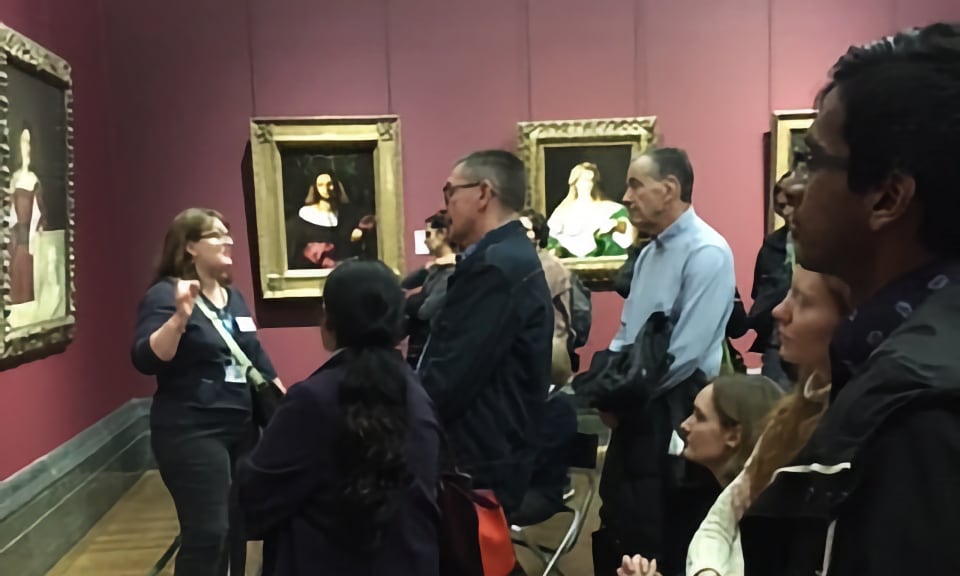In the 17th century the art market expanded and artists were able to develop specialisms and we enjoyed landscape paintings by Claude, self-portraits by Rembrandt and an unusual landscape by Reubens that directly influenced Constable. The beautiful nude “The Rokeby Venus” by Velazquez was a favourite, painted for private enjoyment by the powerful under the noses of the Spanish Inquisition.
In the 18th century we focused on works by Gainsborough and of course “Whistlejacket” by Stubbs, a stunning portrait of a proud, free, powerful horse rearing up on its back legs. British art developed greatly in the 19th century with Constable’s romantic eulogy to the British countryside in “The Haywain” and Turner’s questioning reflections on the industrial revolution. We travelled to France to explore the Impressionists via Monet’s famous “Water Lily Pond” with its beautiful flickering brushwork to capture the effect of changing sunlight, moving water and floating water lilies. We concluded with Van Gogh’s iconic “Sunflowers” and his wonderful “Van Gogh’s Chair”, which is a sort of self-portrait symbolising how Van Gogh saw himself and his art.
Choosing the 20 paintings to tell the story of 7 centuries of art history was quite a challenge, so we shall just have to return to explore more in future!

